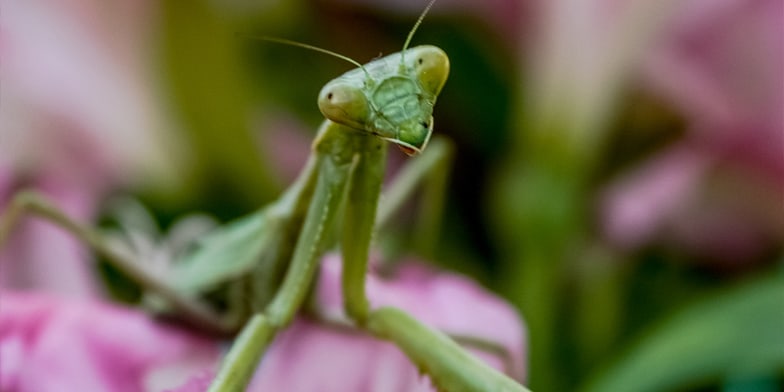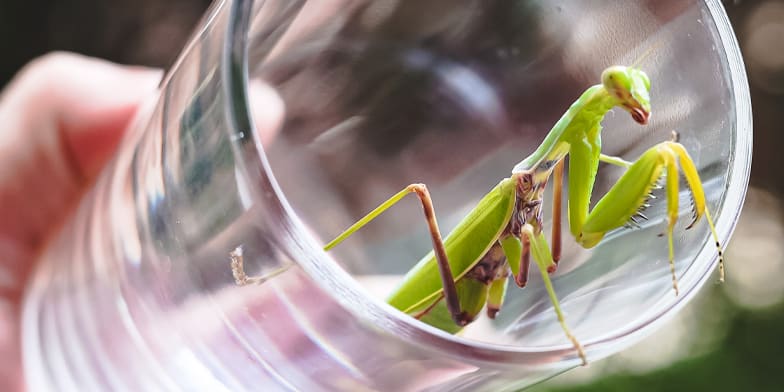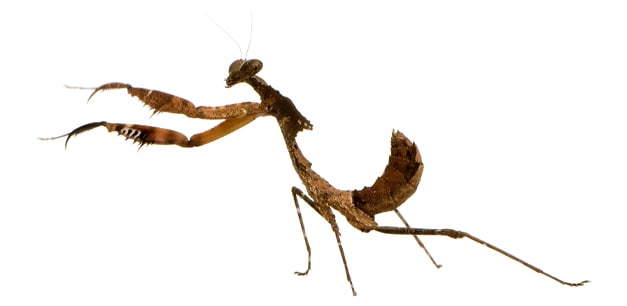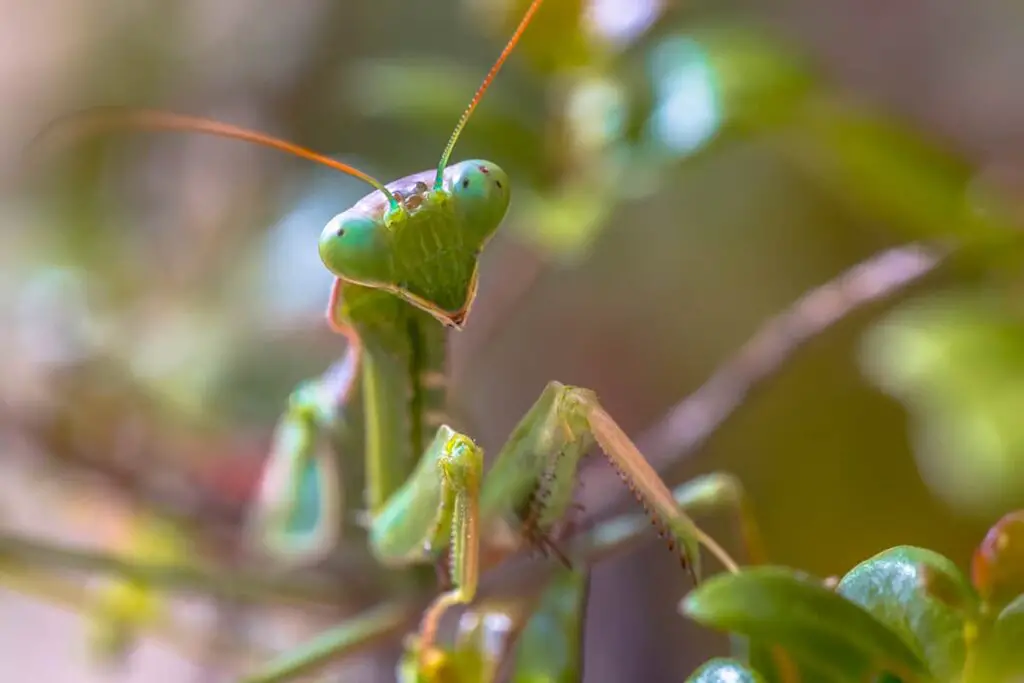
There are over 2,400 recorded species of praying mantis, and most (but not all) will grow wings and develop the capability to fly, but when does this change occur?
Unlike the adults, baby praying mantis cannot fly as it will take until they are close to adulthood for their wings to properly form. However, they do have the ability to jump, which can be so strong and fast it may appear like they can fly. Their leaps can be so swift that you might blink and miss them.
This article is going to look at a few common questions about mantis babies, or nymphs. We’ll look at when they start developing their wings, what they use them for, and how male and female mantises use their flight ability in different ways.
When Do Baby Praying Mantis Grow Wings?
Mantis nymphs develop wings late in their life cycle as they mature into full adults. This change in their bodies is clearly marked by an protrusion on their back where their wings will start to emerge. This inflated area is commonly referred to as the insect’s ‘wing duds’. Once the wings come through, it will still take a few molts before the size of their wings reach their full flight potential.
It’s worth noting that there are many species of Mantis, and not all of them develop wings – even as adults. The size of a mantis (and their wingspan) can also drastically differ between species. This size can vary from less than an inch to six inches in length.
When Do Praying Mantis Start to Fly?
For most species of mantis, juveniles will be able to fly several molts after their wings emerge. The molting process, where the mantis will shed the outer layer of their exoskeleton, is all part of growing up. It is also a vital process for their flight capabilities, as each time they molt their wings will grow stronger and larger.
The number of times a growing mantis will need to molt to reach adulthood varies based on their sex and species, but it is commonly between 7 and 9. Each time they molt, the mantis will expand in size. By the time they have only one molt left to go through, they are classified as ‘subadults’. By this time their wings have already grown, and they’ll be able to fly.
If you are keeping a praying mantis as a pet (which is totally cool, and worth checking out if you’re at all interested) you’ll need to pay attention to this change. Not only because molting is a dangerous time for your mantis, but their new ability to fly to which every location they choose may lead to more escapes than usual.
Why Can’t Female Praying Mantises Fly?
This isn’t strictly true; for many species of mantis, the female has both wings and flight capability. However, female mantis have thicker, shorter wings than their male counterparts. They are also bulkier, as they have to carry and maintain their offspring. This means they cannot fly as easily as males, which have a shorter and stronger physique.
Males of several species of mantis possess smaller wings compared to females, making flying harder for them. Many mantis species also feature sexual dimorphism which will affect the size of their bodies, wings, and their ability to fly.

In general, males will have stronger wings for their size and weight, and as a consequence they are capable of a greater range of flight.
Why Do Praying Mantis Fly?
Male praying mantis, with their comparatively stronger wings and larger flight range, will fly in order to both seek out mating partners and to hunt for food. Females on the other hand, will typically use their wings to evade predators by both flying short distances, and to intimidate by making themselves look larger.
For most insects, flying is a big deal because it consumes a lot of energy, and many will avoid it if possible. If the distance a mantis wants to traverse is short, they will forgo the use of their wings and walk. Sometimes the mantis will decide it’s quicker and easier to jump.
How Well Do Grown Praying Mantis Fly?
Unlike some other flying insects, the flight of the praying mantis can appear somewhat clumsy, and for the most part they cannot cover large distances. Their flight capabilities are reserved for short bursts while hunting or evading predators, and not for long-distance travel. Despite their appearance, mantises are capable of some amazing aerial maneuvers.
During flight, the mantis will move its head backward and forward as a means of measuring distance and gauging their landing. As they land, they will twist their torso in such a way that makes their landing precise, and so they don’t bounce or fall. After a successful landing, the mantis will shake their body in the manner of a wet dog.
The head and thorax of the mantis is very agile, which helps them a lot during flight. They are able to rotate their upper body with a lot of dexterity, while keeping their abdomen (and wings) relatively stable. This is particularly useful when hunting, as they can react to their prey’s movements in the final moments before landing to secure the kill.
A mantises’ body can rapidly and deftly twist, allowing them to land exactly when they intend each time. They will rarely trip or struggle with their prey. These are skills learned by the mantis as a nymph, as they are very capable jumpers. The body movement of an airborne praying mantis has minimal effect on their trajectory. Their body rotation will travel in waves through their midsection, back, and front legs. This helps them to divide their angular energy and keep their entire body on target. For such a seemingly ungainly creature, the precision of a jumping mantis is astounding.
If you watch a mantis carefully, you may notice that when preparing to jump or fly, they will sway their heads almost like a snake to estimate the position and distance of the target. The mantis will then start maneuvering their bodies in the way of a cat about to jump. They ultimately adjust their center of mass and curve their tummies towards the goal before making the leap.
Conclusion
Whether you’re keeping a praying mantis as a pet, or just observing them in the wild, I hope you learned something new about the flight capabilities of these fascinating insects.

Although baby praying mantis cannot fly, they quickly learn that jumping is the next best thing. They spend their youth mastering the aerial acrobatics skills they’ll need for when they grow wings of their own.
It may look clumsy to us, but it’s all the mantis needs to explore their environment, hunt for food, and find a mate.
Driven by a passion for those tiny creatures that rule our world, we at Bug Domain strive to be your go-to resource for information on insects.




